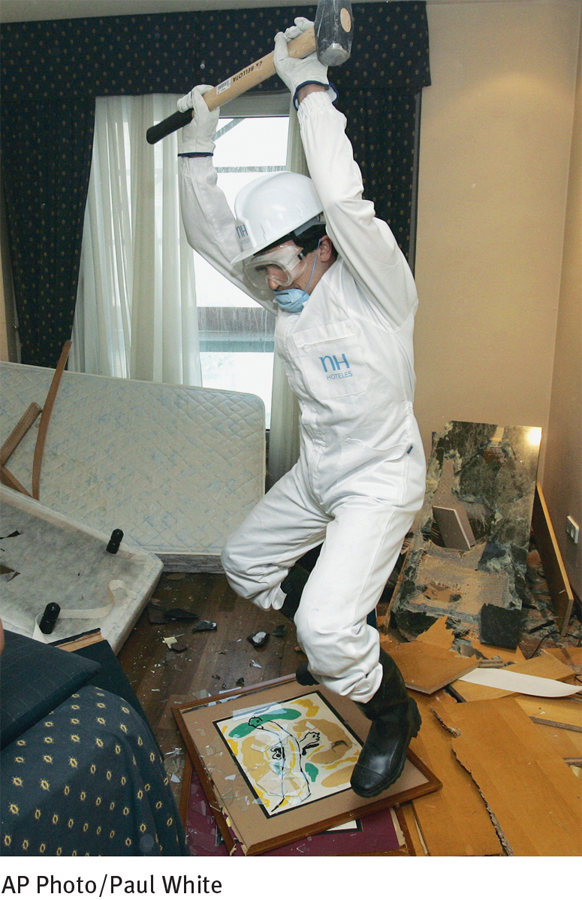1.2 What Is Treatment?
BETWEEN THE LINES
In Their Words
“Some seek the comfort of their therapist’s office, … but I chose running as my therapy.”
Dean Karnazes, Ultramarathon Man: Confessions of an All-
Once clinicians decide that a person is indeed suffering from some form of psychological abnormality, they seek to treat it. Treatment, or therapy, is a procedure designed to change abnormal behavior into more normal behavior; it, too, requires careful definition. For clinical scientists, the problem is closely related to defining abnormality. Consider the case of Bill:
 treatment A systematic procedure designed to change abnormal behavior into more normal behavior. Also called therapy.
treatment A systematic procedure designed to change abnormal behavior into more normal behavior. Also called therapy.
February: He cannot leave the house; Bill knows that for a fact. Home is the only place where he feels safe—
July: Bill’s life revolves around his circle of friends: Bob and Jack, whom he knows from the office, where he was recently promoted to director of customer relations, and Frank and Tim, his weekend tennis partners. The gang meets for dinner every week at someone’s house, and they chat about life, politics, and their jobs. Particularly special in Bill’s life is Janice. They go to movies, restaurants, and shows together. She thinks Bill’s just terrific, and Bill finds himself beaming whenever she’s around. Bill looks forward to work each day and to his one-

Bill’s thoughts, feelings, and behavior interfered with all aspects of his life in February. Yet most of his symptoms had disappeared by July. All sorts of factors may have contributed to Bill’s improvement—
A sufferer who seeks relief from the healer.
A trained, socially accepted healer, whose expertise is accepted by the sufferer and his or her social group.
A series of contacts between the healer and the sufferer, through which the healer … tries to produce certain changes in the sufferer’s emotional state, attitudes, and behavior.
(Frank, 1973, pp. 2–
Despite this straightforward definition, clinical treatment is surrounded by conflict and confusion. Carl Rogers, a pioneer in the modern clinical field (you will meet him in Chapter 3), noted that “therapists are not in agreement as to their goals or aims…. They are not in agreement as to what constitutes a successful outcome of their work. They cannot agree as to what constitutes a failure. It seems as though the field is completely chaotic and divided.”
Some clinicians view abnormality as an illness and so consider therapy a procedure that helps cure the illness. Others see abnormality as a problem in living and therapists as teachers of more functional behavior and thought. Clinicians even differ on what to call the person who receives therapy: those who see abnormality as an illness speak of the “patient,” while those who view it as a problem in living refer to the “client.” Because both terms are so common, this book will use them interchangeably.
Despite their differences, most clinicians do agree that large numbers of people need therapy of one kind or another. Later you will encounter evidence that therapy is indeed often helpful.